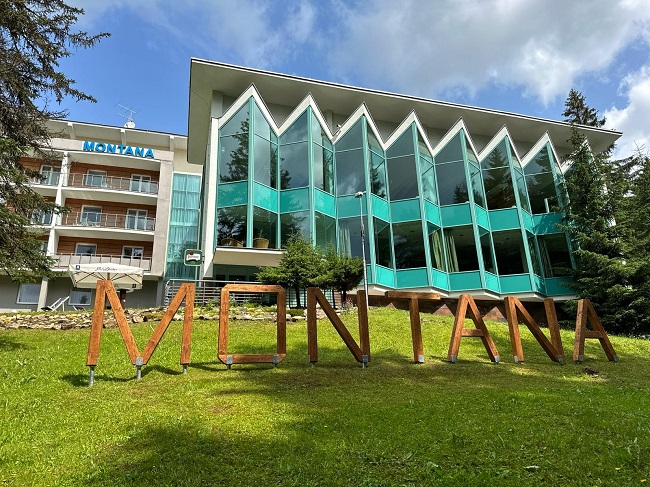
Zigzag patterns on walls can help overheated buildings, says a study
 |
New York – Incorporating three-dimensional zigzag patterns into building walls could help cool overheated structures while reducing the amount of heat they reflect back into the environment. This is according to a study reported by the news portal The Guardian.
Buildings are currently responsible for approximately 40 percent of global energy consumption and account for more than a third of global carbon dioxide emissions. A significant portion of this energy comes from air conditioning.
The use of air conditioning is rapidly increasing as the world warms and more people can afford it. Greenhouse gas emissions from cooling could more than triple by 2050, wrote NewScientist. Many scientific teams are therefore trying to explore ways to passively address cooling that would not rely on energy consumption.
A research team led by Qilong Cheng from Columbia University in New York has developed a promising solution that could help reduce energy consumption by redirecting sunlight away from buildings.
Cheng's team proposed the design of a wall with a zigzag pattern that can reduce the surface temperature of a building by up to three degrees Celsius compared to flat walls, without consuming any energy. "With such a design, we can have cooler buildings," Cheng said. "And we can thereby reduce energy consumption for cooling."
The design consists of walls with a series of protrusions that create a zigzag shape when viewed from the side - as if someone took stairs and laid them flat. This configuration utilizes radiative cooling - a passive cooling strategy that reflects sunlight. Radiative cooling has gained attention in the last decade as an energy-efficient way to reduce air conditioning demands.
To test their solution, Cheng's team built a one-meter high model with both a zigzag and flat surface. When placed outside in New Jersey during the summer, the zigzag surface was, on average, two degrees Celsius cooler than the flat surface after 24 hours and three degrees cooler between 1:00 PM and 2:00 PM.
According to Cheng, a number of inexpensive materials could be used for these cooling walls. It would also be possible to retrofit existing buildings by adding corrugated panels.
The effect of interior cooling will vary depending on other factors, such as the size of the building's windows, but simulations suggest it could reach up to two degrees Celsius. This could reduce energy consumption needed for cooling by up to a quarter.
Zigzag cooling walls would only be suitable for warmer climates, as they would increase the need for heating in cooler areas during winter. However, Cheng and his colleagues also proposed a design with retractable "fins" that could be extended or folded depending on whether heat needs to be absorbed or reflected.
Brno - Another four apartment buildings comprising 188 units will be constructed by the development company Domoplan from the Fipox group in the so-called Brno Bronx, bounded by the streets Cejl and Bratislavská. The company announced the expansion of construction in these locations in a press release. In an area long associated with the Roma community and socially disadvantaged residents, developers have been either renovating old buildings or replacing them with new constructions in recent years.
Domoplan is currently completing the construction of the Pekárenský dvůr residential complex with 239 apartments in the block between Bratislavská and Cejl and is also working on the Block A[rt] project with 31 apartments in its vicinity on Bratislavská Street.
"We successfully completed our investment plan and acquired another building in the street lineup on Bratislavská. The ongoing construction of Pekárenský dvůr is thus expanding with this third phase after the Block A[rt] project. This symbolically completes the under-construction complex and fully encloses it," said Domoplan CEO Tomáš Vavřík. The original building on Bratislavská will be demolished and in its place, an apartment building with 37 units and a terracotta facade will be constructed.
Two more buildings, each with 34 apartments, will be built by Domoplan on Příční Street, which is perpendicular to Bratislavská. Two apartment buildings will rise on the neighboring parcels Příční 12 and 14. Construction at Příční 14 began this May, and the foundation work is currently underway; work on the neighboring parcel is expected to start in the first quarter of next year.
The Botanica project will then be created on Staré Street and will include 83 apartments. "Currently, the first architectural designs are being developed for a special floral facade that will create a green oasis in the middle of the city from two apartment buildings. The construction of vertical gardens will be made possible by cladding with large-volume flower pots for growing plants. In addition to the 83 residential units, there will also be a communal courtyard terrace. Construction is scheduled to begin in the first quarter of next year according to the current plan," added Vavřík.
In addition to construction near the center of Brno, Domoplan will also start building a multifunctional complex Brixx on the border between the municipal districts of Bohunice and Starý Lískovec. Upon completion, the area will have 409 apartments and 92 accommodation units for students, and it will include a green piazzetta with shops, cafes, and restaurants.
The English translation is powered by AI tool. Switch to Czech to view the original text source.
0 comments
add comment











